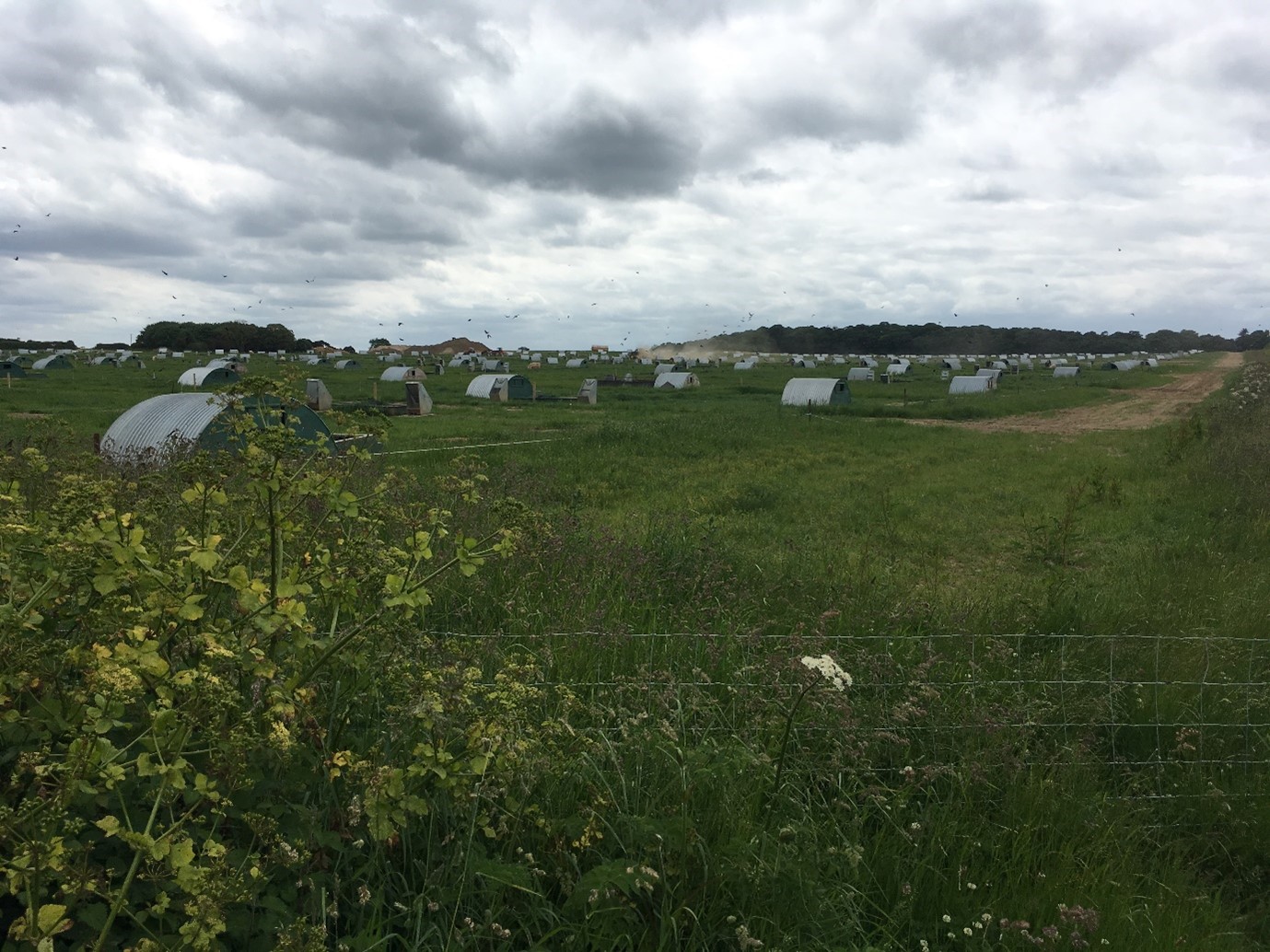BLOG: Ten top tips to reduce the impact of wetter winters on outdoor pig paddocks
Thursday, 29 April 2021
In his blog, Andrew Palmer, Knowledge Exchange Manager, provides some tips for mitigating some of the issues associated with our increasingly wetter winters, such as surface run-off.
UK winters are getting wetter, with the most recent being confirmed as the third wettest on record. In some areas, rainfall between August 2020 and January 2021 exceeded 50 cm – more than 1.5 times than we would usually expect.
This led to challenging conditions and high numbers of water pollution events throughout the country, including significant quantities of surface run-off reaching watercourses.
Over the last few years, we have been working with Norfolk Rivers Trust, Anglian Water, the Environment Agency and many others, to help landowners and farmers mitigate some of the issues associated with the increasingly wetter winters, e.g. surface run-off.

Green cover and wide margins at an outdoor pig unit
Ten top tips
Taking action sooner rather than later is key, why not start with these top tips:
- Check for designated or restricted areas using Natural England’s Magic Map: magic.defra.gov.uk/home.htm. Pig units should not be located within an SPZ1 or SPZ2. Exercise caution when considering a site near to a watercourse, field drain or protected area such as a SSSI.
- Undertake a risk assessment of the site to look at field topography, previous cropping, soil health and soil nutrient content. Avoid fields that have serious capping or compaction issues, contain silty- or clay-loam soil type, have just been de-stoned, or follow high-risk arable crops such as maize, potatoes and onions.
- Consider surface water connectivity, including ditches, tracks, roads and gateways.
- Work with landowners to determine responsibilities pre-, during and post-pigs.
- Move high-risk gateways, install track humps, cross drains and silt traps, and create ‘no-go’ areas such as wide (10-30 m) buffer strips and margins to prevent run-off from the site. These should be seeded and left intact and can be enhanced for stewardship by sowing with a pollen and nectar, or over-winter bird, mix.
- Use cover crops and grass leys and reduce stocking rates on high-risk areas.
- Avoid broadcast feeding where possible e.g. by installing feeders, this will prevent disturbance to the soil structure.
- Regularly check water troughs for leaks and repair as soon as any are identified.
- Site temporary manure heaps at appropriate distances from water courses: at least 50 metres from a borehole, 10 metres from a waterbody (river, pond or ditch) or land drain (or 30 metres if the land slopes at 12 degrees or more from a watercourse), and outside of an SPZ1. Move the heap annually and leave a two-year gap before returning to the same site.
- Get in touch with me, Andrew Palmer, Norfolk Rivers Trust or the Environment Agency if you have any questions.
Water Sensitive Farming (WSF) is an initiative that provides independent farm support and advice. The aim is to deliver practical on-farm measures that improve the quality and resilience of the surrounding water environment.
Useful links
Guide to cross compliance in England
Rules for farmers and land managers to prevent water pollution
Topics:
Sectors:

